Family Members of Victims of War Crime from Sjeverin Seek Justice before Constitutional Court
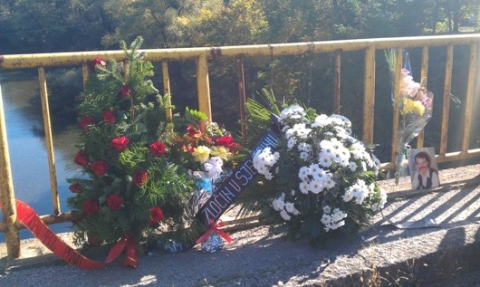
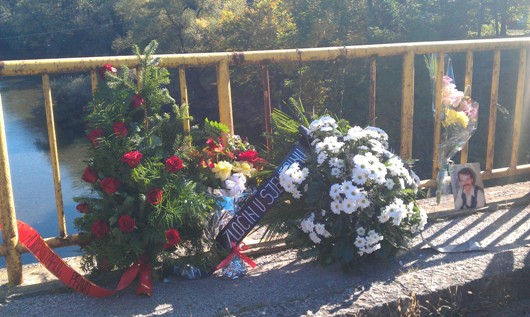
Bridge in Mioče, Bosnia and Herzegovina, place where 16 people from Sjeverin were kidnapped.



Bridge in Mioče, Bosnia and Herzegovina, place where 16 people from Sjeverin were kidnapped.

 Nataša Kandić, počasna građanka Sarajeva, u intervjuu za TV mrežu u emisiji “Ko su dobitnici priznanja u Srbiji i regionu?”
Nataša Kandić, počasna građanka Sarajeva, u intervjuu za TV mrežu u emisiji “Ko su dobitnici priznanja u Srbiji i regionu?”

The Hague Tribunal’s president Theodor Meron said the UN had failed by not setting up a reparations fund but defended his court’s record after a series of controversial acquittals.
“It is not right that the United Nations did not create some kind of a fund for reparations, for victims of war crimes in the former Yugoslavia,” judge Meron told BIRN in The Hague.
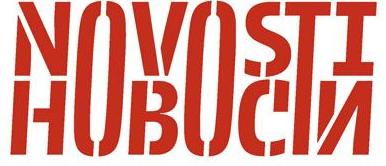
Sindrom balkanskog špijuna i dalje vlada ovim prostorima. Umjesto da se suočavaju s društvenim, ekonomskim i političkim problemima, ljudi ovdje radije prihvaćaju mutna objašnjenja da tajne službe – one prošle i sadašnje, domaće i strane – još uvijek u značajnom dijelu upravljaju društvom. Namjera mi je, kao i mnogim ovdašnjim kolegama, otvoriti relevantno arhivsko gradivo, razbiti famu o balkanskom špijunu i omogućiti građanima da sami dođu do svojih zaključaka, poruka je Christiana Axboea Nielsena, danskog povjesničara, sveučilišnog profesora, bivšeg analitičara Haškog suda i svjedoka na suđenju Radovanu Karadžiću, Momčilu Krajišniku, Mići Stanišiću, Stojanu Župljaninu i Goranu Hadžiću. Nielsen je u sklopu svoga novog istraživanja povijesti javne i državne sigurnosti socijalističke Jugoslavije nedavno posjetio i Zagreb.

Tomašica kod Prijedora, gdje su do sada pronađeni posmrtni ostaci 397 osoba, od čega je 247 kompletnih tijela, najveća je masovna grobnica na ovim prostorima. Lejla Čengić, portparol Instituta za nestale osobe (INO) Bosne i Hercegovine u izjavi za Anadolu Agency potvrdila je da masovna grobnica u Tomašici ”zasigurno najveća masovna grobnica koja je otkrivena na ovim prostorima”

 The Humanitarian Law Center (HLC) filed a complaint against the verdict rendered by the First Basic Court in Belgrade obliging the Republic of Serbia to pay the amount of 210,000 RSD to Kosovo Albanians, Jahir Krasniqi and Jakup Tahiri, as compensation for being found responsible for the inhumane treatment and torture that these victims were exposed to by members of the Ministry of Interior (MUP) during their unlawful detention in 1999 and 2000. HLC highlights that this is one of the lowest compensation amounts granted by courts in Serbia in cases of serious human rights violations committed during 1990’s thus relativizing the responsibility of the state for crimes for which representatives of institutions of Serbia are found responsible.
The Humanitarian Law Center (HLC) filed a complaint against the verdict rendered by the First Basic Court in Belgrade obliging the Republic of Serbia to pay the amount of 210,000 RSD to Kosovo Albanians, Jahir Krasniqi and Jakup Tahiri, as compensation for being found responsible for the inhumane treatment and torture that these victims were exposed to by members of the Ministry of Interior (MUP) during their unlawful detention in 1999 and 2000. HLC highlights that this is one of the lowest compensation amounts granted by courts in Serbia in cases of serious human rights violations committed during 1990’s thus relativizing the responsibility of the state for crimes for which representatives of institutions of Serbia are found responsible.
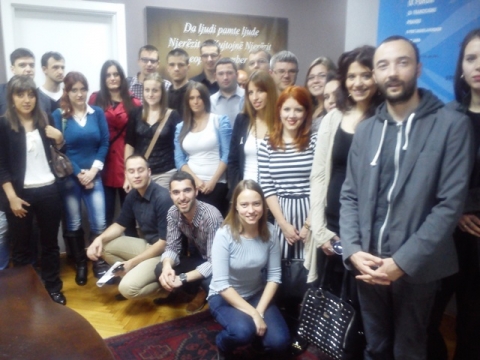
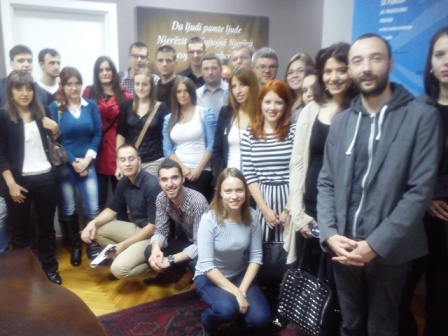 Students from various universities in Serbia and human rights organizations’ activists, who attend a seminar organized by OSCE in Serbia titled “Dealing with the Past and Judicial Institutions”, visited the Humanitarian Law Center (HLC) on Friday, October 25th, 2013.
Students from various universities in Serbia and human rights organizations’ activists, who attend a seminar organized by OSCE in Serbia titled “Dealing with the Past and Judicial Institutions”, visited the Humanitarian Law Center (HLC) on Friday, October 25th, 2013.
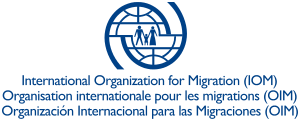
 The core objective of International Organization for Migration’s Report is to facilitate discussions and political decision making about reparations for victims of international crimes (genocide, crimes against humanity and war crimes) committed during the “Yugoslav wars,” as they are defined in and covered by the mandate of the International Criminal Tribunal for the former Yugoslavia (ICTY). This Report is the outcome of a project initiated by a request from the Office of the President of the ICTY to develop a set of concrete recommendations or suggestions on this issue. To provide a starting point for discussions, this Report examines what a comprehensive reparations effort could look like and how it could be achieved given the current context.
The core objective of International Organization for Migration’s Report is to facilitate discussions and political decision making about reparations for victims of international crimes (genocide, crimes against humanity and war crimes) committed during the “Yugoslav wars,” as they are defined in and covered by the mandate of the International Criminal Tribunal for the former Yugoslavia (ICTY). This Report is the outcome of a project initiated by a request from the Office of the President of the ICTY to develop a set of concrete recommendations or suggestions on this issue. To provide a starting point for discussions, this Report examines what a comprehensive reparations effort could look like and how it could be achieved given the current context.